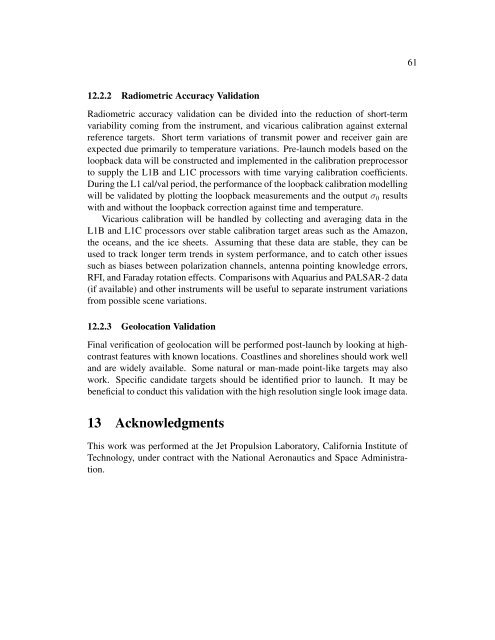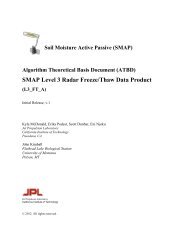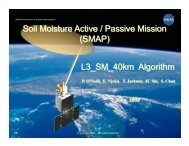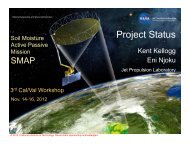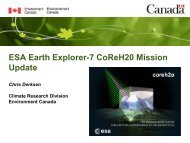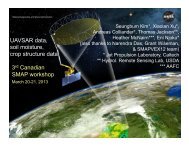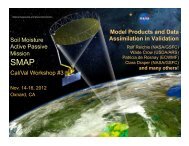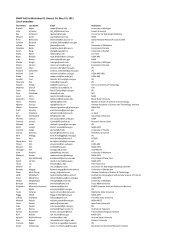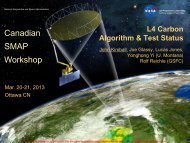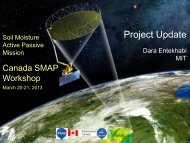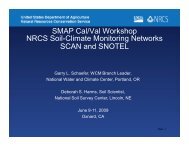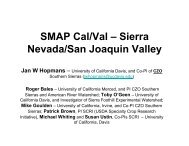(ATBD) SMAP Level 1 Radar Data Products - NASA
(ATBD) SMAP Level 1 Radar Data Products - NASA
(ATBD) SMAP Level 1 Radar Data Products - NASA
You also want an ePaper? Increase the reach of your titles
YUMPU automatically turns print PDFs into web optimized ePapers that Google loves.
61<br />
12.2.2 Radiometric Accuracy Validation<br />
Radiometric accuracy validation can be divided into the reduction of short-term<br />
variability coming from the instrument, and vicarious calibration against external<br />
reference targets. Short term variations of transmit power and receiver gain are<br />
expected due primarily to temperature variations. Pre-launch models based on the<br />
loopback data will be constructed and implemented in the calibration preprocessor<br />
to supply the L1B and L1C processors with time varying calibration coefficients.<br />
During the L1 cal/val period, the performance of the loopback calibration modelling<br />
will be validated by plotting the loopback measurements and the output σ 0 results<br />
with and without the loopback correction against time and temperature.<br />
Vicarious calibration will be handled by collecting and averaging data in the<br />
L1B and L1C processors over stable calibration target areas such as the Amazon,<br />
the oceans, and the ice sheets. Assuming that these data are stable, they can be<br />
used to track longer term trends in system performance, and to catch other issues<br />
such as biases between polarization channels, antenna pointing knowledge errors,<br />
RFI, and Faraday rotation effects. Comparisons with Aquarius and PALSAR-2 data<br />
(if available) and other instruments will be useful to separate instrument variations<br />
from possible scene variations.<br />
12.2.3 Geolocation Validation<br />
Final verification of geolocation will be performed post-launch by looking at highcontrast<br />
features with known locations. Coastlines and shorelines should work well<br />
and are widely available. Some natural or man-made point-like targets may also<br />
work. Specific candidate targets should be identified prior to launch. It may be<br />
beneficial to conduct this validation with the high resolution single look image data.<br />
13 Acknowledgments<br />
This work was performed at the Jet Propulsion Laboratory, California Institute of<br />
Technology, under contract with the National Aeronautics and Space Administration.


